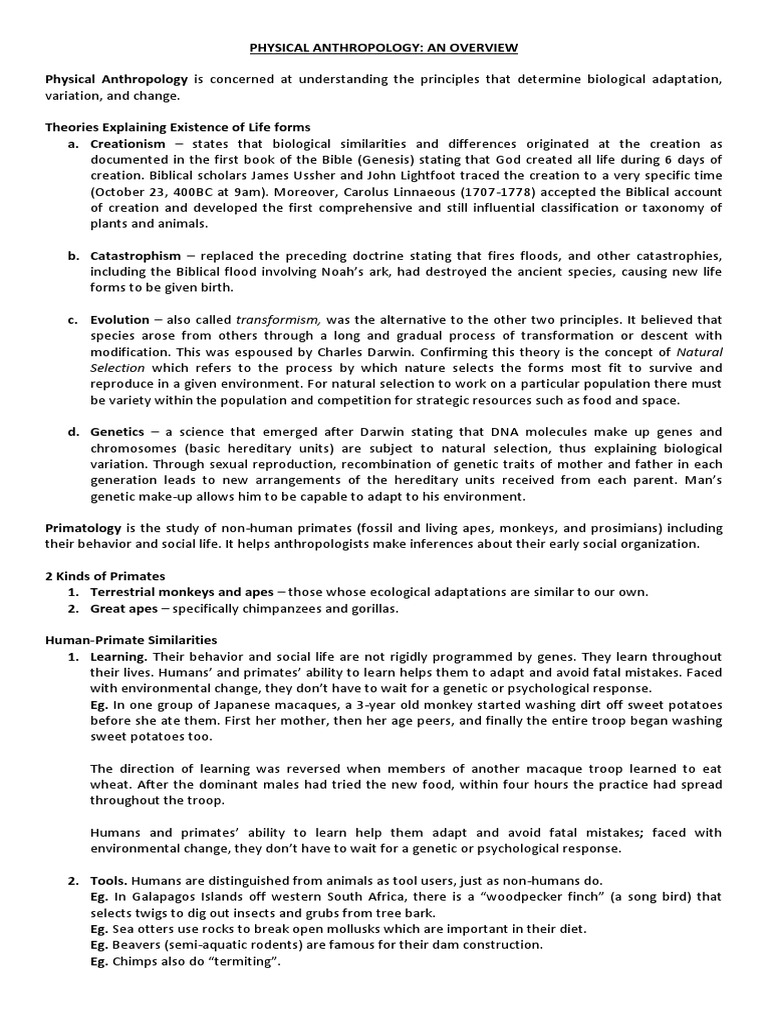Physical anthropology, also known as biological anthropology, is a multifaceted subfield of anthropology that scrutinizes the biological and physiological aspects of humans within the context of evolution. This discipline is remarkable for its amalgamation of various scientific domains, particularly biology, archaeology, and genetics. It seeks to elucidate the intricate tapestry of human origins and adaptations, offering a window into the evolutionary processes that have shaped the current human species.
At the core of physical anthropology is the study of human evolution. This includes an examination of fossil records, comparative anatomy, and the evolutionary significance of various hominid species. A pivotal concept within this arena is the notion of bipedalism. The transition from quadrupedalism to an upright posture is a defining feature that set early hominins on a divergent path from other primates. The exquisite integration of data from fossilized remains enables anthropologists to hypothesize about the lifestyle and environmental adaptations of our distant ancestors.
Another integral component of physical anthropology is primatology, which entails the observation and study of non-human primates. By examining our closest relatives, scientists can draw parallels and distinctions between species. This branch of study provides insights into social structures, communication behaviors, and cognitive abilities, all of which contribute to a deeper understanding of human behavior and societal development. The exploration of primate behavior can reveal much about the evolutionary pressures that shaped early human societies, thereby reinforcing the interconnectedness of our lineage.
Genetics also plays a crucial role in physical anthropology, particularly through the analysis of DNA. Advances in genetic sequencing technologies have revolutionized how anthropologists approach the study of human diversity. By examining genetic variations, researchers can trace lineage, migration patterns, and evolutionary adaptations that have occurred over millennia. The field of population genetics, which examines how genetic traits distribute within and between populations, is invaluable for studying human adaptations to diverse environments, including climate adaptations, dietary shifts, and disease resistance.
Human variation is another imperative theme within physical anthropology. It encompasses the study of physical differences among contemporary human populations. These encompass variations in skin color, stature, and physiological adaptations to climate, such as the development of body types that are suited for extreme weather conditions. Understanding these variations is critical in comprehending how humans have adapted to various ecological niches throughout history. The interplay between culture and biology is exemplified in these adaptations, showcasing how humans respond not just to natural selection, but also to social constructs and environmental challenges.
The methodologies employed in physical anthropology are as diverse as its subject matter. Excavation of archaeological sites often yields valuable fossil evidence, while field studies of living primates provide contemporary insights into behavior and adaptation. In addition to traditional excavation techniques, modern physical anthropologists now utilize advanced imaging technologies such as CT scans and 3D reconstructions to meticulously analyze skeletal remains. This technological integration allows for the examination of prehistoric humans’ physical attributes and lifestyle choices with striking precision, enhancing our comprehension of evolutionary trajectories.
Moreover, the implications of physical anthropology extend beyond academia. The understanding garnered through this discipline provides pivotal knowledge for addressing current global issues like climate change. By grasping how humans have historically adapted to environmental shifts, researchers can inform contemporary strategies for resilience and adaptation in the face of ongoing climatic alterations. The linkage between climate and physical anthropology underscores the potential for historical insights to shape present-day decisions and strategies concerning conservation and sustainability efforts.
Additionally, physical anthropology touches upon ethical considerations, particularly concerning bioethics and the treatment of human remains. The development of respectful and ethically sound methods for studying human remains is essential. These considerations are paramount in the increasingly globalized world where the exchange of knowledge must balance scientific inquiry with cultural sensitivities. The narratives surrounding our ancestors necessitate a thoughtful approach that honors their cultural heritage while advancing scientific understanding.
Physical anthropology is further distinguished by its interdisciplinary nature. Collaborations across disciplines—including archaeology, paleontology, and genetics—enhance the scope of questions that physical anthropologists can address. This interdisciplinary approach not only enriches the understanding of human evolution, but also produces a more detailed portrait of human history and adaptation over time. The cross-pollination of ideas and methods fosters innovation and allows researchers to tackle complex questions regarding health, biology, and the environmental influences shaping human life.
In summation, physical anthropology serves as a critical lens through which humanity’s past can be illuminated, offering profound insights into our biological heritage and the adaptive strategies we have employed over time. By integrating the trifold components of evolution, genetics, and human variation, this subfield offers a comprehensive narrative of human existence. The findings from physical anthropology are not merely academic; they facilitate a broader understanding that can inform current ecological challenges and foster a greater appreciation of the dynamic interplay between humanity and environment. The depth and breadth of topics within physical anthropology ensure that it remains an essential field for anyone seeking to understand the biological intricacies of humankind.
